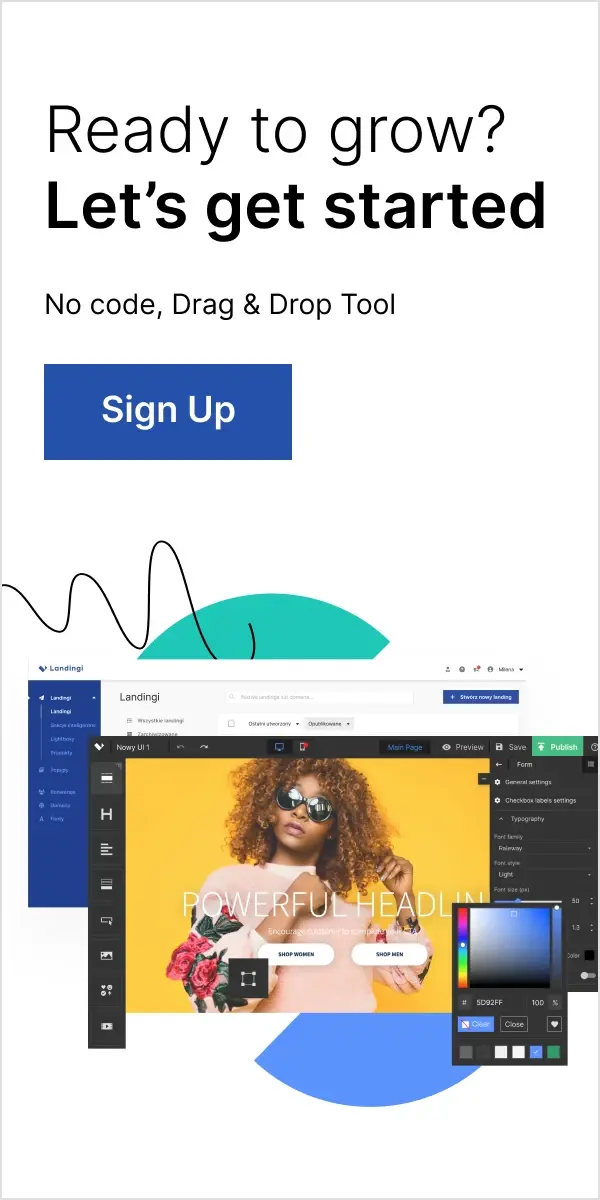Landing pages happen to be one of the most important part of any lead generation effort. A lot of businesses however still fail to leverage this potential and tend to focus their attention on developing their website’s homepage only.
But how does a landing page result in better conversions? It’s because driving audiences to specific sections of your website mean you can communicate customized messages targeted to specific segments of your audience. A landing page is designed to clearly tell your visitors what you want them to do next, with clear instructions on how they can do it.
This makes it a lot easier for visitors to know exactly what to do once they arrive on your site. And if they don’t have to second-guess what their next steps should be, it will ultimately have a better impact on your lead generation efforts.
Speaking of things being easy, it’s also a tool that saves you a lot of effort, especially if you decide to go for a landing page template.
So what exactly do you need to create an effective landing page? Take a look at these critical elements below:
1. A landing page must be separate from your homepage and have a single focussed message
Do not use your homepage as a landing page. No matter how well you crafted your homepage, its key elements won’t be helpful when it comes to converting leads. A homepage will typically have a lot of text and messaging, which may serve to confuse visitors.
Landing pages are meant to deliver a clear message that will direct users towards a single, actionable task. That’s the reason why they’re so effective.
2. A landing page must have a straightforward and powerful headline
A well written, easy to read a headline that can capture the attention of your audience and pique their interest is critical for landing pages.
It has to reassure them that they arrived at the right place. This also means that there has to be clear continuity between the source campaign and its associated landing page.
3. A landing page must contain a clear description of the offer
Construct your messaging in such a way that you communicate the key points of your offer first. Start by explaining the importance of your objective and go straight into the value behind your offer. Your copy has to be persuasive and steer audiences towards achieving your goal.
To support this goal, provide other supporting elements that can help make your case for you, such as testimonials, customer logos, images or even security badges. Your landing page builder should allow that.
4. A landing page must not have unnecessary navigation
Your landing page is intended to encourage your visitors to take one specific action. Once the visitor lands on that page, you want to keep them there until they are ready to complete the task you are asking them to.
To avoid confusion and ensure that they don’t wander off, be sure to limit, if not completely remove unnecessary navigation from the page.
5. A landing page must have a clear call-to-action
Your call to action (CTA) is critical to conversions as it is the main objective of your landing page. This is the main element of your landing page that you want your visitors to interact with.
Refrain from using generic CTA copy. Instead, be more specific and show your visitors what they will get. For example, a better alternative to “Click here” would be “Claim your discount here” or “Join our mailing list.”
One last note…
Overall, your landing page copy and messaging should be brief. This is especially important when it comes to your CTA. Only ask for the bare minimum and gather data that you actually need. Asking for too much information might put off your visitors who might simply abandon your page. Also, remember to integrate your landing page with analytical tools or mailing systems – to create (for example) WordPress landing pages.
These landing page essentials should ensure that you create an effective landing page that will capture the attention of your audience and convert them.








